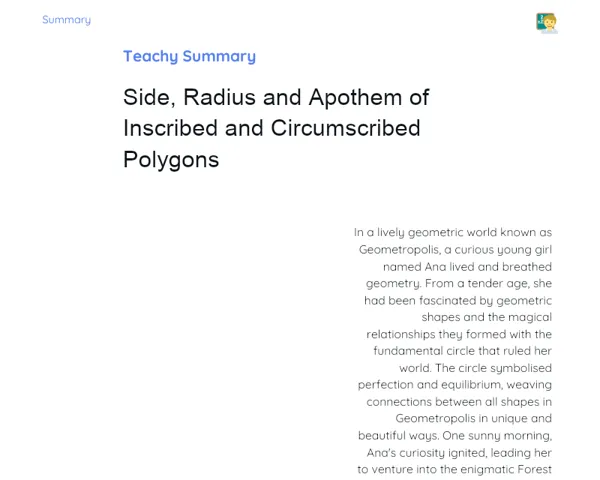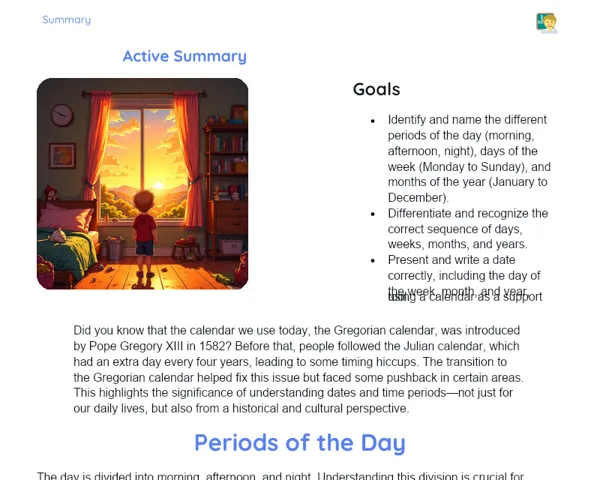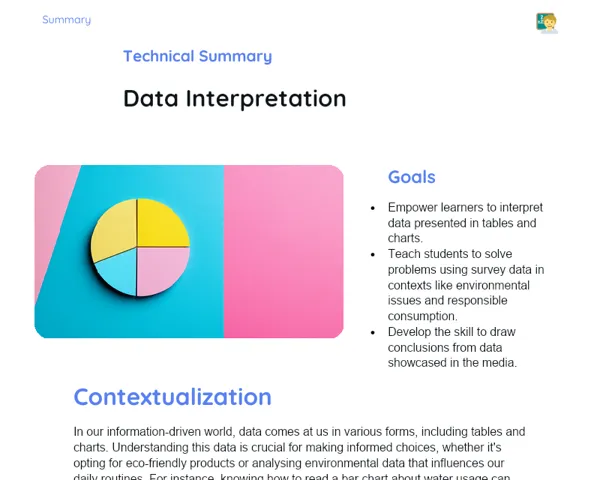Objectives
1. 🎯 Get the hang of calculating arcs, chords, and inscribed angles in circles.
2. 🎯 Tackle real-world problems involving circles by applying mathematical concepts effectively.
3. 🎯 Build logical reasoning and spatial visualization skills, which are key for grasping geometry and its practical applications.
Contextualization
Did you know that the wheel, one of the most important inventions in human history, is a prime example of how circumference is applied? From transport to mechanical engineering, the circular shape plays a crucial role because of its symmetry and ability to evenly distribute forces. By learning about circles in maths, we’re diving into a fundamental principle that has led to countless innovations over the years!
Important Topics
Circles and Circumferences
Circumferences are closed curved lines where all points are equally distant from a central point, known as the centre of the circle. The area contained within this circumference is the circle itself. These concepts are foundational in geometry and have various practical applications, like in engineering and art.
-
The circumference is calculated using the formula C = 2πr, where 'r' is the radius of the circle. This is essential for determining distances in circular movements and engineering.
-
The area of the circle is determined using the formula A = πr², which is important for calculating space in design and architecture, ensuring materials are used efficiently.
-
Grasping the relationship between radius, diameter, and circumference assists in solving practical and theoretical problems, bolstering logical reasoning and analytical skills.
Arcs and Inscribed Angles
An arc is a segment of the circumference. Inscribed angles are those whose vertex is on the circumference, with sides that are chords of the circle. Understanding these aspects is crucial for applying the geometric properties of circles to real-life scenarios such as bridge construction or graphic design.
-
Arcs are measured in degrees or radians and are vital for understanding the geometry of circles and the mechanics behind curved movements.
-
Inscribed angles have a unique property: the inscribed angle that subtends an arc is always half of the central angle that subtends the same arc, which is a principle used in navigation and astronomy.
-
The ability to calculate and apply the concepts of arcs and inscribed angles is important for jobs that necessitate geometric precision, like engineering and architecture.
Chords
A chord of a circle is a straight line segment whose endpoints touch the circumference. Studying chords is important for applications that span from art to science, helping to deepen understanding of the relationships and properties within a circle.
-
The distance between the centre of the circle and the chord is key for calculating the height of arches and vaults in architecture.
-
Chords that are equidistant from the centre are equal in length, which is a concept used to draw and construct symmetrical and balanced structures.
-
Examining chords aids in understanding more complex concepts in geometry, such as the Pythagorean theorem when applied to circles.
Key Terms
-
Circumference: The distance around the circle, calculated as 2π times the radius (2πr).
-
Radius: A line from the centre of the circle to any point on the circumference. Half of the diameter.
-
Diameter: A line that passes through the centre and touches two opposite points on the circumference. It is double the radius.
-
Arc: A segment of the circumference of the circle.
-
Inscribed Angle: An angle whose vertex is on the circumference of the circle and whose sides are chords of the circle.
-
Chord: A straight line segment whose endpoints touch the circumference of the circle.
For Reflection
-
How can the properties of circles be leveraged to enhance designs in engineering and architecture?
-
In what ways does studying circles and their properties impact technology and innovations in our daily lives?
-
What is the significance of geometric reasoning we learn through circles for other areas of maths and sciences?
Important Conclusions
-
We delved into the basics of circles and circumferences, covering calculations of arcs, chords, and inscribed angles, as well as how these concepts are relevant in theoretical and practical contexts.
-
We highlighted the significance of circles across various fields, from engineering to design, and the necessity of understanding these mathematical concepts for innovation and problem-solving.
-
We advocate for the view that mathematics isn't just a collection of formulas, but an essential tool for making sense of and engaging with the world around us.
To Exercise Knowledge
Design a children's playground using circles of various sizes to create a harmonious and functional space. Utilize the concepts of area and circumference to plan the placement of each piece of playground equipment.
Challenge
Draw a functional sundial using just a piece of paper, a ruler, and a pointed object. Apply your knowledge of angles and arcs to calculate the positions of the hours.
Study Tips
-
Practice sketching circles and marking specific points, such as the centre, radius, and diameter, to better visualize and understand the properties discussed.
-
Explore geometry apps or drawing software that lets you manipulate circles and other shapes, reinforcing understanding through visualisation.
-
Chat with friends or family about how circular objects feature in everyday life and try to identify problems that can be addressed using the concepts learned.



